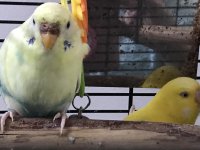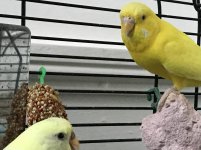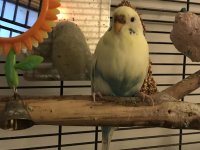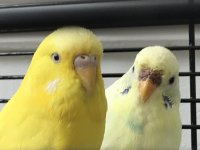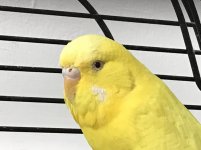Hi all. I recently got two budgies from a rescue Center. They were left on the doorstep in a cage so don’t know any history.
My back ground is in cockatiels so I’m not terribly familiar with the details of aging and sexing budgies. I was wondering if anyone can help me with my two. I think the Lutino is a mature bird as it seems to have a white iris. The other one, I have no idea what mutation it is, seems to have some lacing on its wings but also still has some of the batting feathers still on its cap and cheeks so I think it might be juvenile?
Anyway, any help with sexing, aging and mutation if possible is greatly appreciated.
Thanks
My back ground is in cockatiels so I’m not terribly familiar with the details of aging and sexing budgies. I was wondering if anyone can help me with my two. I think the Lutino is a mature bird as it seems to have a white iris. The other one, I have no idea what mutation it is, seems to have some lacing on its wings but also still has some of the batting feathers still on its cap and cheeks so I think it might be juvenile?
Anyway, any help with sexing, aging and mutation if possible is greatly appreciated.
Thanks
Attachments
Last edited:
